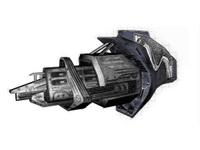| |
 Site Navigation
Site Navigation
Main
News
Forums
Games
Games Database
Top 100
Release List
Support Files
Features
Reviews
Previews
Interviews
Editorials
Diaries
Misc
Download
Gallery
Music
Screenshots
Videos
Miscellaneous
Staff Members
Privacy Statement
|
 |
|
|
MC_Renzy
Fearless Paladin

Joined: 04 Nov 2001
Posts: 226
|
| Can anyone here figure this out? |
|
I just upgraded my Geforce 2 Ultra to a Radeon 9800 pro 128mb. Every 15 to 30 minutes my computer will freeze(Usually while playing games). I am then required to hit the reset button. After that, when it comes to the cmos, my screen flickers like crazy and I then have to turn my computer completely off and on to fix it. Although, when I leave my system on all night while I sleep, it runs the screen saver and does not freeze at all. I updated my VIA 4n1 drivers. Updated the vid drivers to 4.4. I don't overclock my system and leave my case open to reduce heat. I'm not sure what else I can do. Never had a single problem with my old Geforce card so I know for certain that its the Radeon. I heard ATI is bad for stuff like this and lots of people have similar problems. Can anyone think of anything I can try to fix this? Thanks very much for any input.
Windows XP Pro
350 watt Enermax power supply
Asus A7V
1.2gig Thunderbird AMD
768 pc133 ram
Radeon 9800 Pro 128MB
LCD Monitor (Using DVI connection)
Sound Blaster Live Value |
 Wed Jun 02, 2004 12:11 pm
Wed Jun 02, 2004 12:11 pm |
|
|
Jaz
Late Night Spook

Joined: 20 Jan 2002
Posts: 9708
Location: RPGDot |
Firstly, check your ATI drivers. If you're using the latest Catalyst drivers, they might be the cause of your problem, they are known for erratic behavior when it comes to games. Try going back one version to 6.14.10.6436 - if the driver was the problem, this will most likely help.
If it doesn't, it might be either heat or power.
As for heat: Leaving the casing open will not necessarily help to reduce heat - it makes heat sinks redundant, even, as the cooled air vents out into the open instead of streaming around the parts which need cooling badly. Ever tried water cooling? My water cooling plus fan club of three reduced heat-induced crashes to zero.
As for power: In case you're planning on buying another power supply soon, anyway, try to overclock your current source's VCore voltage in the CMOS settings by 0.5 notches. This won't hurt the HW too much while bringing a significant power boost. Yet be advised it WILL damage the HW in the long run.
_________________
Jaz |
 Wed Jun 02, 2004 1:24 pm
Wed Jun 02, 2004 1:24 pm |
|
|
Toaster
Bread Alert

Joined: 27 Jan 2003
Posts: 5475
Location: Sweden |
I solved my problem with my 9800 Pro by setting the AGP Voltage to 1.7V. Found the solution on the Rage3D forums, and they say the increased AGP Voltage solves about 95% of all stability problems with 9800 Pro's.
_________________

Tabbrowser Extensions
DictionarySearch |
 Wed Jun 02, 2004 3:52 pm
Wed Jun 02, 2004 3:52 pm |
|
|
MoonDragon
High Emperor


Joined: 25 May 2002
Posts: 1254
Location: Waterloo, Canada |
Another possibility, if you installed the card yourself, is that you fried your memory or motherboard, ever so slightly. Static will do that sensitive electronic equipment. If all other remedies fail, I would suspect the motherboard. To test this, put your old card back for few days and see if you'll still get the freezes.
_________________
(@) |
 Wed Jun 02, 2004 9:25 pm
Wed Jun 02, 2004 9:25 pm |
|
|
Danicek
The Old One

Joined: 15 Dec 2001
Posts: 5922
Location: Czech Republic |
Combinations of old MB such as Asus A7V and very new cards is certain way to encounter problems. I did it several times and several times I had to read many forums and FAQs to know how to solve it. |
 Thu Jun 03, 2004 7:45 am
Thu Jun 03, 2004 7:45 am |
|
|
Dhruin
Stranger In A Strange Land

Joined: 20 May 2002
Posts: 1825
Location: Sydney, Australia |
All the items above are all worth investigating. Based on your description, the problem isn't likely to be drivers since they cannot cause the flickering before Windows even begins to load. Overheating and power supply issues would seem to make the most sense.
Sometimes the heatsink is not well attached to the GPU or heatsink paste is unevenly (or even not) applied. In this case the unit can overheat because the transfer to the heatsink is poor - but the heatsink itself may not get all that hot and opening the side won't help (in addition to the limitations Jaz noted).
Power supply is your next best bet...again try Jaz' suggestion. Finally, don't rule out a plain old faulty card. It may not be likely but it does happen. I don't know how many people waste time chasing something that is never going to work (It can't be faulty - it's brand new!!). 
_________________
Editor @ RPGDot |
 Thu Jun 03, 2004 9:33 am
Thu Jun 03, 2004 9:33 am |
|
|
MC_Renzy
Fearless Paladin

Joined: 04 Nov 2001
Posts: 226
|
Ok, I think I figured it out. My first format and reinstall ended up with the same results but on the second format I immediatly installed Windows XP Service pack 1 as well as 'not' installing the VIA 4n1 drivers. Now it seems to be working. Only question is, was it the VIA 4n1 or the upgrade to the service pack that fixed the problem? Really don't feel like having to format again so I guess I'll never know. Thanks for the help guys. |
 Thu Jun 03, 2004 12:29 pm
Thu Jun 03, 2004 12:29 pm |
|
|
hwfanatic
Average Fanatic

Joined: 28 Oct 2002
Posts: 2850
Location: Belgrade, Serbia |
You can still try to install via 4in1, but without the AGP drivers... |
 Fri Jun 04, 2004 3:39 pm
Fri Jun 04, 2004 3:39 pm |
|
|
|
All times are GMT. The time now is Sat Apr 13, 2019 10:22 pm
|
|
|
|
|
|
|






